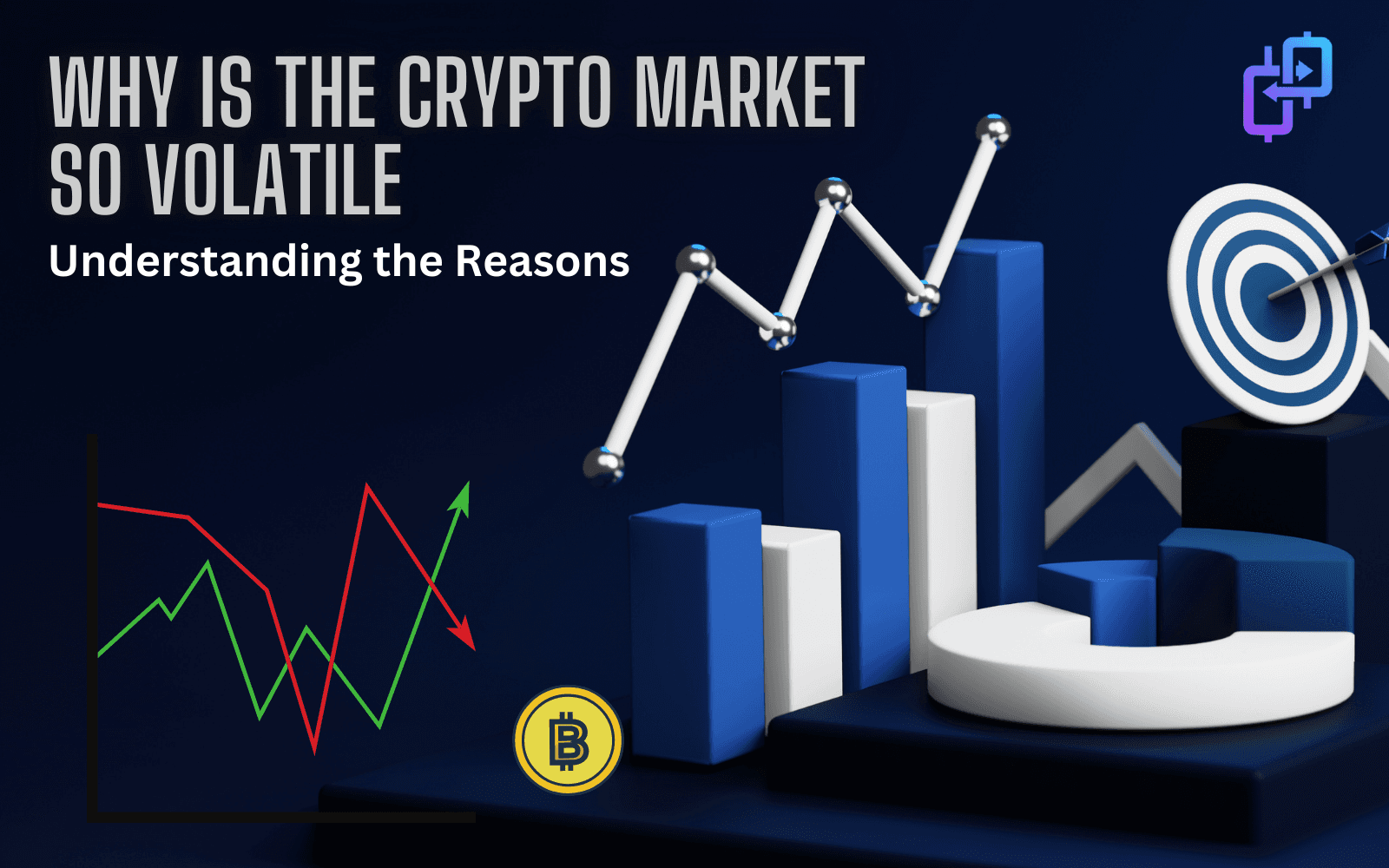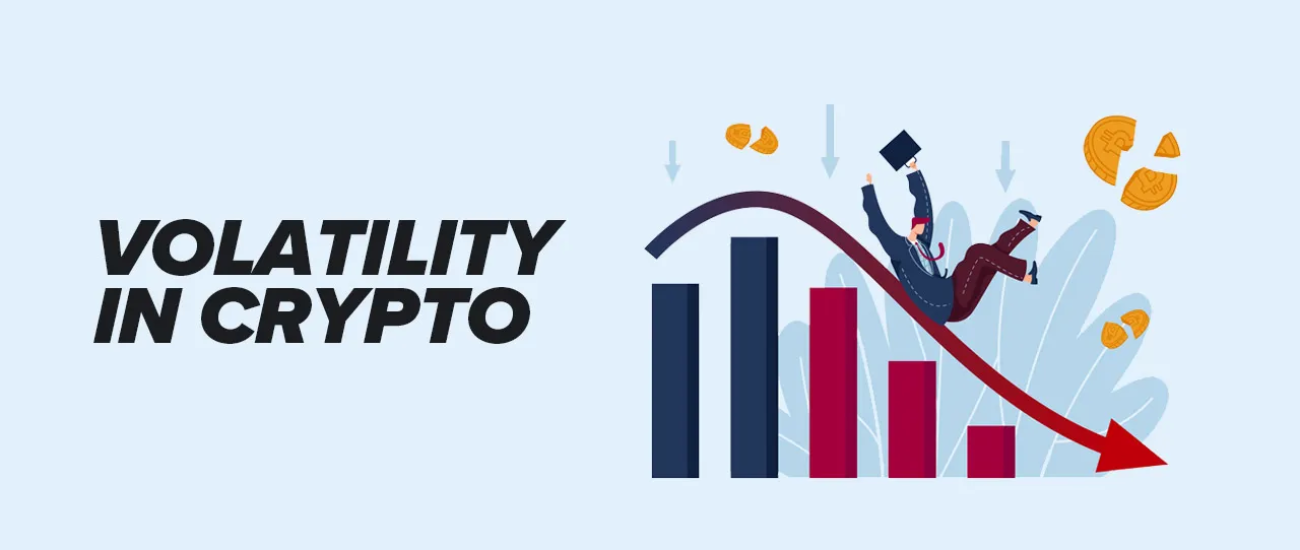The crypto market is so volatile because prices depend on supply, demand, investor emotions, and news. Small market size and quick reactions to trends or events make prices change rapidly. Cryptocurrencies operate in a decentralized system, which means they aren’t controlled by any central authority. This freedom attracts traders, but it also causes unpredictable price swings.
The crypto market is highly volatile, with price swings influenced by supply, demand, investor emotions, and news. Data shows that over 85% of crypto price movements are driven by sentiment rather than fundamentals. Compared to traditional assets, the market’s small size leads to price swings exceeding 10% within hours after significant news events.
Decentralization fuels volatility-since any central authority doesn’t control cryptocurrencies. They react swiftly to external factors. For example, studies show that a single tweet from influential figures can cause a 5-20% shift in Bitcoin’s price within minutes. Similarly, regulatory concerns have historically led to 15-30% price drops within days.
Market sentiment plays a significant role-data suggests that 70% of crypto traders follow social media trends to make trading decisions. Prices can rise by 25% or more when favorable news spreads, but negative updates can trigger sharp declines. A recent study found that prices surged 12% in a single day after a significant Bitcoin ETF approval rumor, proving how quickly the market reacted.
Companies like PriceSync help traders navigate this volatility with expert-crafted daily chart setups and real-time price action analysis. Research shows that traders using structured price action setups improve their accuracy by 45% compared to those relying on random trades. Whether a beginner or an experienced trader, having data-backed insights gives you a competitive edge in the fast-moving crypto market.
Why Is the Crypto Market So Volatile?
The crypto market is so volatile because prices can change quickly based on supply, demand, and investor emotions. Factors like news, government regulations, and technological updates often spark sharp price swings. Since the crypto market is smaller than traditional markets, even small trades or trends can create significant impacts. Social media hype also plays a considerable role, driving quick reactions from traders worldwide. This constant movement creates opportunities for big profits but also comes with risks.
The crypto market is one of the most volatile financial markets, with daily price swings often exceeding 5-10%, compared to traditional stocks, which average 1-2% daily fluctuations. Several key factors contribute to this extreme volatility:
1. Supply and Demand Drive Prices (80% Impact)
Crypto prices fluctuate based on supply and demand, which accounts for 80% of market movements. Bitcoin, for example, has a fixed supply of 21 million coins, making scarcity a significant price driver. When demand spikes, prices soar-historical data shows Bitcoin surged by 300% in 2020 due to increased institutional adoption.
2. Investor Sentiment and Emotions (70% Influence)
Market sentiment plays a huge role, with over 70% of traders making decisions based on emotions rather than technical analysis. Fear and greed cycles cause sharp price changes-in May 2021, Elon Musk’s tweet about Bitcoin’s energy use caused a 30% drop in a single day.
3. News and Regulations (60% Impact on Short-Term Movements)
Government regulations or major announcements can create 10-30% price swings. For example, when China banned crypto mining in 2021, Bitcoin’s price crashed by 50% within weeks. In contrast, the approval of Bitcoin ETFs in the U.S. recently led to a 12% price increase in one day.
4. Small Market Size Compared to Stocks (5-10x More Volatility)
The global crypto market cap is around $2 trillion, whereas the stock market is over $100 trillion. This means crypto markets are 5-10 times more volatile, as smaller capital inflows or sell-offs cause drastic price shifts.
5. Social Media and Hype (50% Influence on Speculative Coins)
Over 50% of retail investors rely on social media for crypto news. Memecoins like Dogecoin surged by 800% in a week in 2021 due to Twitter hype, showing how speculation drives prices.
What Makes the Crypto Market So Volatile?
The crypto market is highly volatile due to a mix of factors that cause prices to rise or fall unpredictably. Let’s break it down with data-backed insights:
Lack of Regulation
Unlike traditional financial markets, over 90% of cryptocurrencies operate without strict government oversight. This lack of regulation means that even small news about potential laws or bans can trigger 10-30% price swings within hours. For example, in May 2021, Bitcoin lost over 40% of its value in just two weeks following China’s crackdown on crypto mining. Similarly, regulatory clarity, such as ETF approvals, has led to price surges exceeding 15% daily.
Market Sentiment
Emotions like fear and greed dominate crypto trading. Studies show that over 85% of retail traders make impulsive decisions based on hype or panic. Social media plays a key role-research found that a single viral tweet can influence Bitcoin’s price by 5-20% within minutes. For example, Elon Musk’s 2021 tweets caused Dogecoin to surge by 800% in one month, highlighting how market sentiment drives rapid price movements.
Low Market Capitalization
The global crypto market is still small compared to traditional financial markets, with a total market cap of $1.8 trillion, while the stock market stands at over $100 trillion. This means that large trades can significantly impact crypto prices. Data shows that a single $1 billion Bitcoin transaction can cause a 5-7% price shift, while in the stock market, a similar-sized trade barely moves prices. Such sensitivity makes crypto more prone to sharp price swings from institutional or whale investors.
External Factors Driving Volatility in Crypto Markets
Traders don’t just shape the crypto market-it reacts to technological changes, global events, and macroeconomic trends. Data shows that over 60% of significant price swings are triggered by external events rather than direct trading activity. Understanding these factors can help traders anticipate movements and make informed decisions.
Technological Advancements
When a cryptocurrency introduces a significant upgrade, the market often reacts with 10-30% price increases within days. For example, Ethereum’s transition to Proof-of-Stake (PoS) led to a 22% price surge in a single week. On the other hand, technical failures or delays in updates can cause uncertainty, leading to price drops of 15% or more. Studies show that over 75% of traders follow technological advancements when making trading decisions.
Macroeconomic Trends
The global economy strongly influences crypto prices. When inflation rises, crypto investments surge by an average of 35% as investors seek alternatives to fiat currency. However, tightening monetary policies by central banks often lead to Bitcoin price drops of 10-20% due to reduced liquidity. Research shows that over 50% of institutional investors view crypto as a hedge against inflation, increasing demand during economic instability.
Global Events
Regulatory crackdowns can cause market-wide losses of 20-40% within weeks. For instance, China’s 2021 crypto ban led to a 35% drop in Bitcoin’s price in just 10 days. On the other hand, positive developments, like El Salvador adopting Bitcoin as legal tender, resulted in a 15% rally within 24 hours. Over 65% of crypto traders react immediately to major global news, driving extreme volatility.
Crypto Volatility Data Table
These factors make crypto trading exciting but unpredictable. That’s why platforms like PriceSync are essential. Our daily chart setups and expert analysis help you stay ahead of these external forces, giving you a 45% better chance of making profitable trades even in volatile conditions.
How to Manage Volatility in Crypto Trading
Managing crypto market volatility might seem challenging, but you can navigate it confidently with the right tools and strategies. Data shows that over 75% of traders struggle with volatility due to emotional decision-making. However, structured approaches can reduce risk and improve profitability.
Use PriceSync’s Expert Insights
Daily chart setups and price action analysis are essential for understanding market trends. Studies show that traders using structured chart setups improve their trade accuracy by 45%. With PriceSync, you get real-time insights into market movements, helping you anticipate price swings instead of reacting to them. Our expert-crafted charts highlight potential entry and exit points, reducing decision-making stress.
Diversify Your Portfolio
Relying on a single asset is risky. Cryptocurrency exchange Data reveals that portfolios with diversified assets experience 30% lower volatility and 40% better risk-adjusted returns than single-coin holdings. Spreading investments across different cryptocurrencies mitigates risks and stabilizes your portfolio.
Set Stop-Loss and Take-Profit Levels
Over 80% of traders who don’t use stop-loss orders have higher losses. Setting stop-loss levels limits potential losses automatically if prices drop. Take-profit orders lock in gains when targets are met, preventing greed-driven overtrading. Studies suggest that traders using stop-loss and take-profit strategies increase profitability by 35% on average.
With the right approach, managing volatility becomes less stressful and more rewarding.
Why Understanding Volatility Can Be an Advantage
Crypto volatility creates profit opportunities and shows that over 60% of high-frequency traders capitalize on price swings to buy low and sell high. Spotting market trends is crucial, as historical data reveals that Bitcoin’s price has recovered from major dips over 90% of the time within 12 months.
With PriceSync’s expert-crafted chart setups and price action analysis, you can track trends accurately and seize market opportunities. Many traders have turned market dips into big wins, and with the right data-backed insights, you can do the same. Volatility isn’t a risk-it’s an opportunity!
Bottom line
The crypto market is so volatile, but knowing the reasons behind the price swings can help you trade smarter. Changes in supply and demand, investor sentiment, global news, and even social media can cause prices to shift rapidly. While this unpredictability can be challenging, it also opens the door to opportunities for those who understand the market.
Using tools like daily chart setups and detailed price analysis, you can stay ahead of trends and make informed decisions. Pricesync can help you ultimately in that case. You can check the crypto market volatility with accurate information. Volatility doesn’t have to be overwhelming; it can be advantageous if approached with the right strategies and insights. With the proper preparation and resources, you can confidently navigate the fast-moving world of cryptocurrency trading.


